[[post.title]]
We're changing for you!
Check out our new website
We're changing for you!
Check out our new website
Apr 23, 2025
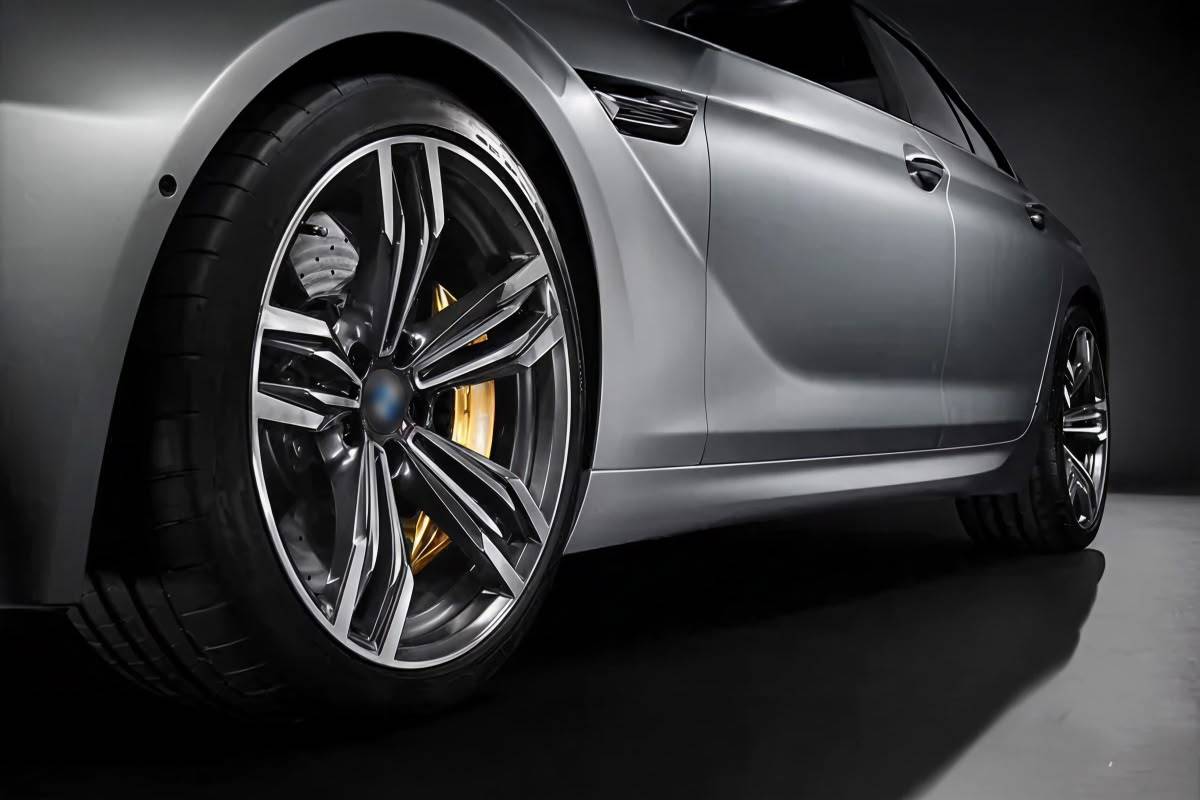
If tires are the shoes of your car, wheels must be the feet. Of course they just simply allow your vehicle to roll the direction you want (and sometimes NOT the direction you want…), but since the days of wooden spokes, they have been a fantastic way to show off your style. However, as the days of staining the wood a different color are long gone, now it’s size, color, design, and so much more.
Regardless if you’re choosing a different factory wheel or your favorite aftermarket one, there are a few things you’ll need to know to make the right decision. Coming up, we’ll try to answer questions like:
So, tighten your lug nuts and let’s get into the ultimate wheels guide for (not only) BMWs!
To kick things off, we must clear out some confusion once and for all:
Ah… The age old question. While today they are used interchangeably, there is technically a difference. To get specific, the “wheel” is the center round part that actually attaches to the hub. The “rim” is just the outer lip on both the front and rear of the wheel. In a modern sense, it keeps the tire from leaving the chat.
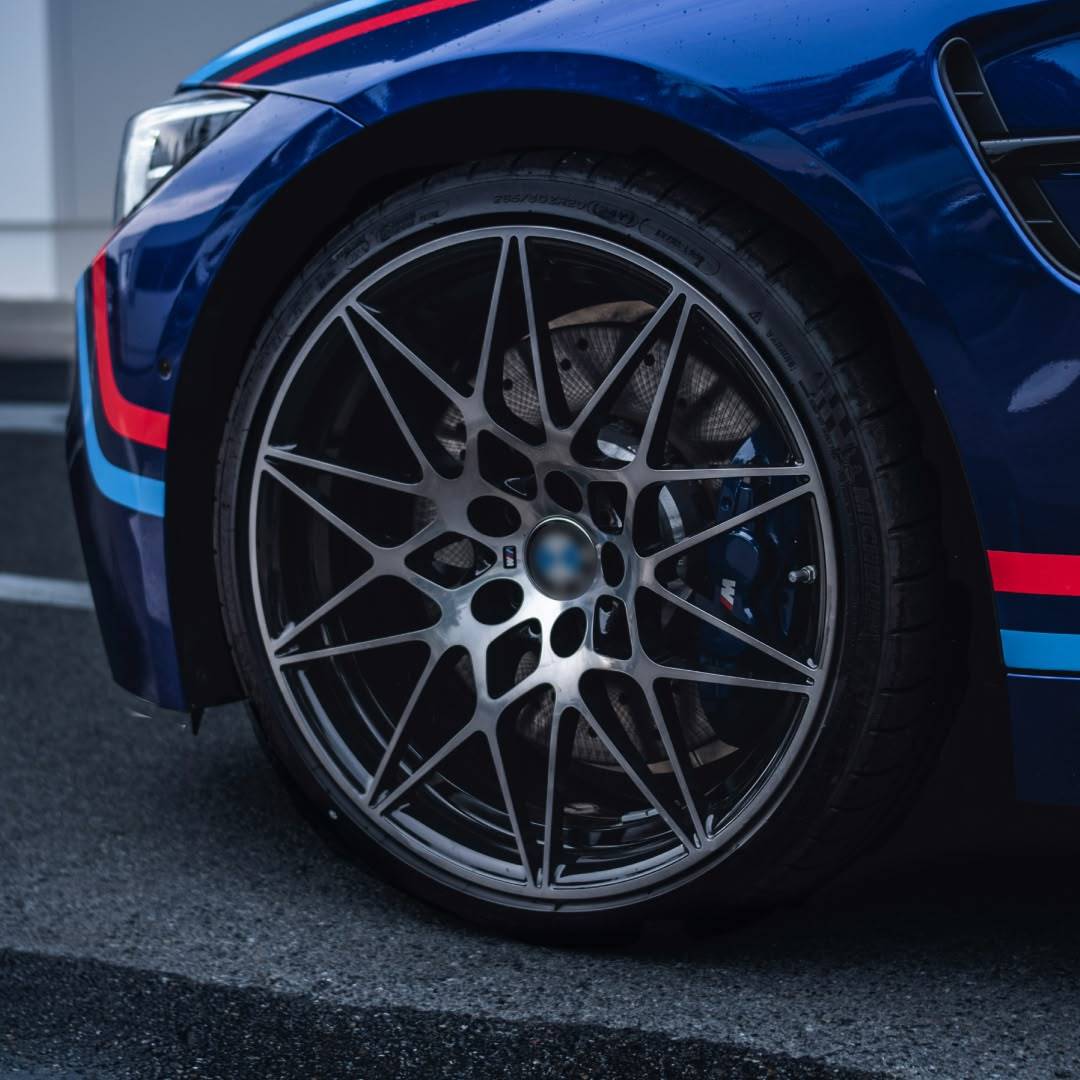 Remember we talked about wagon wheels before? Let’s go back to that for a second. Back in the day, there were no tires. You had a round piece of wood, which made a wheel. Wood isn’t the most durable thing, so people started putting a “rim” of metal around it. Wheel, and rim.
Remember we talked about wagon wheels before? Let’s go back to that for a second. Back in the day, there were no tires. You had a round piece of wood, which made a wheel. Wood isn’t the most durable thing, so people started putting a “rim” of metal around it. Wheel, and rim.
Back to today, you can see there is a difference between the two, but regardless if you say you want new BMW wheels or new BMW rims, everyone will know what you mean. Just PLEASE don’t call them tires…
What is BMW wheel offset? Offset is not something the average person is going to be talking about, but for you enthusiasts that really want to customize your BMW, this might be some important information to know.
Simply put, wheel offset is the distance from the mounting surface to the centerline of the wheel. backspacing is the distance from the mounting surface to the wheel's back lip. There are a few different “offsets” to keep in mind:
What’s their purpose?
Well, the most obvious is visual. Each one gives you a different look. A very positive offset will give your wheels a flat and streamline look. An offset that is closer to zero (depending on the design) can give you a deeper look. In turn, a negative offset will give you a “deep dish” look.
When selecting new wheels, having something with too much positive or negative offset can cause some issues though. Too much of a positive offset can cause rubbing on the body or suspension (since more of the wheel will be in the back), poor handling, interference with brakes, and more.
Too much negative offset can also cause poor handling, but apart from that it will put more stress on the suspension by changing the scrub radius, as more of the wheel will be in front of all of that.
Make sure you look into all of this and measure how much room you have in your BMW before purchasing new wheels just because they look cool!
Staggered wheels means you have larger wheels and tires in the back and skinnier wheels and tires in the front. In some RARE cases, there could be bigger ones on the front of some vehicles, but that’s mostly applicable to front-wheel or all-wheel drive vehicles, like the current generation Audi RS3. Front-heavy staggered wheels setup is meant to mitigate the infamous understeer in this instance.
Why does this matter? Generally speaking, more tire means more grip. Since a lot of BMWs are rear wheel drive, the more rubber you have in the back, the better (well… don’t get too carried away!). It’s basically just the opposite of what they used on the RS3, but in BMW's instance to counteract the oversteer typical to rear-wheel drive cars.
Of course you could do fatter wheels up front too, but you need to remember one thing: turning. Not the smartest idea to have something that will start rubbing the second you look at the steering wheel.
Staggered wheels also just give your ride a mean look. American muscle cars have been doing it for many decades and that’s what they were originally built for: lots of grip in the back to rocket down tarmac a quarter mile at a time.
But what about the xDrive (all-wheel drive/AWD) BMWs?
Since BMW’s xDrive gives all of the wheels power, is it safe to go for a staggered setup? The short answer is yes, but be careful. Where things will get tricky is the overall wheel-and-tire diameter.
While width is a bit more forgiving, diameter is not. You’ll need to make sure your wheels AND tires are the same diameter both front and back. Failure to do so can really cause trouble for your drive system. Personally, when it comes to xDrive BMW staggered wheels, a square stance (meaning all four wheels and tires are the same) might be the smartest, just to be on the safe side.
Now it’s time for visual learning. Regardless if these are BMW X5 wheels, M3 wheels, or whatever, these are some of the most popular BMW wheels both new and old. While there are tons of aftermarket options available, this will just be factory BMW wheels.
We all have to remember where we came from, right? So in no particular order, here are the top ten classic BMW wheels featured on the rides from the past that we know and love!
To this day, this is still one of the most aftermarket copied wheels for BMW. Classic, stylish, and a great blend of elegance and sport.
Size: 7x16 and 6.5x15 inches
ET (offset): 46 and 42
Used on models: E46
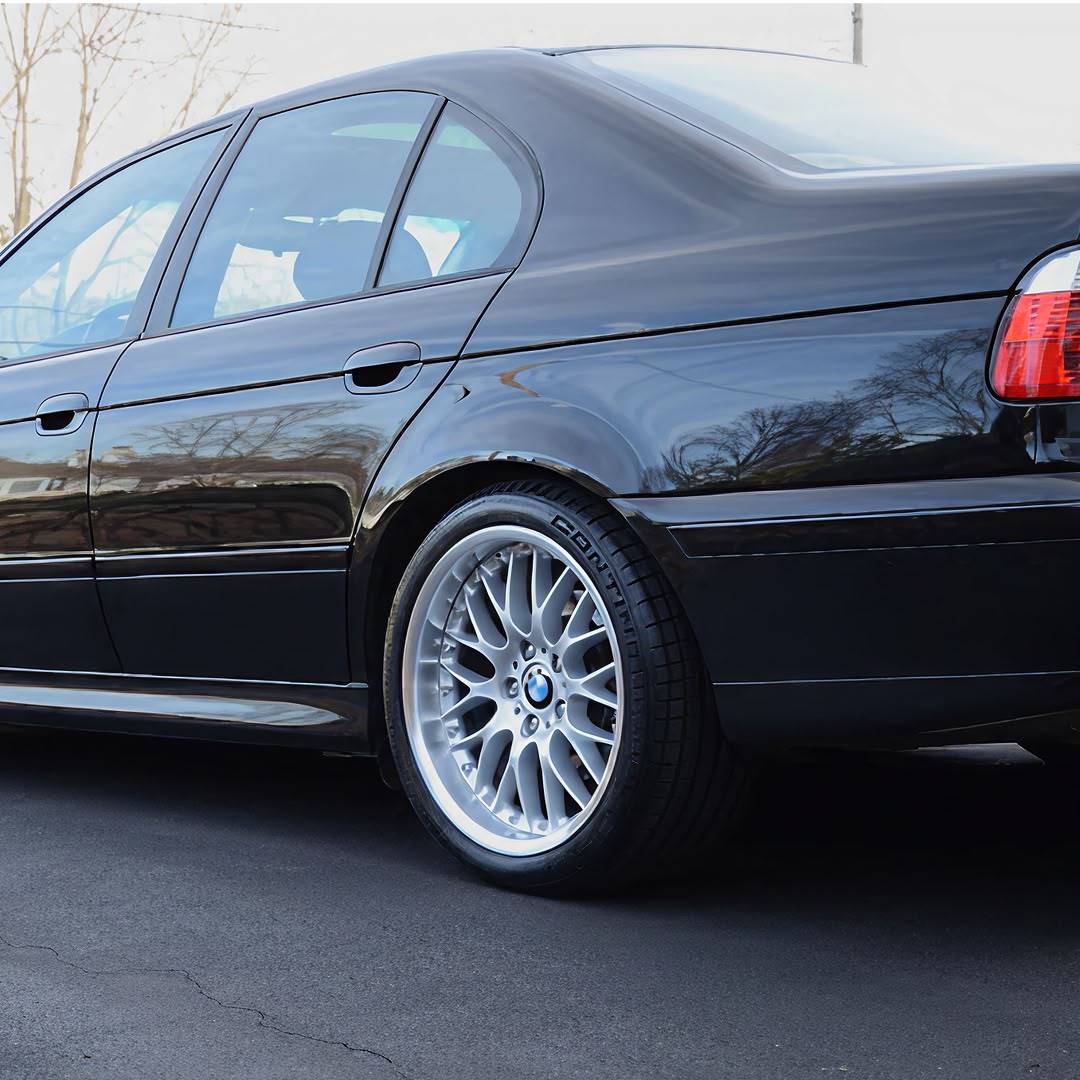
When you think of classic BMW, this wheel comes to mind whether you know what it’s called or not. Used on the 3, 5, 6, AND 7 Series BMWs from the late 1980s to early 1990s, this wheel pretty much is BMW.
Size: 6.5x14, 7x15, 7.5x16, 7.5x16, and 7x14 inches
ET (offset): 30, 24, 45, 41, 30, 27, 18, 20
Used on models: E30, E36, E38, E34, E24, E23, E32
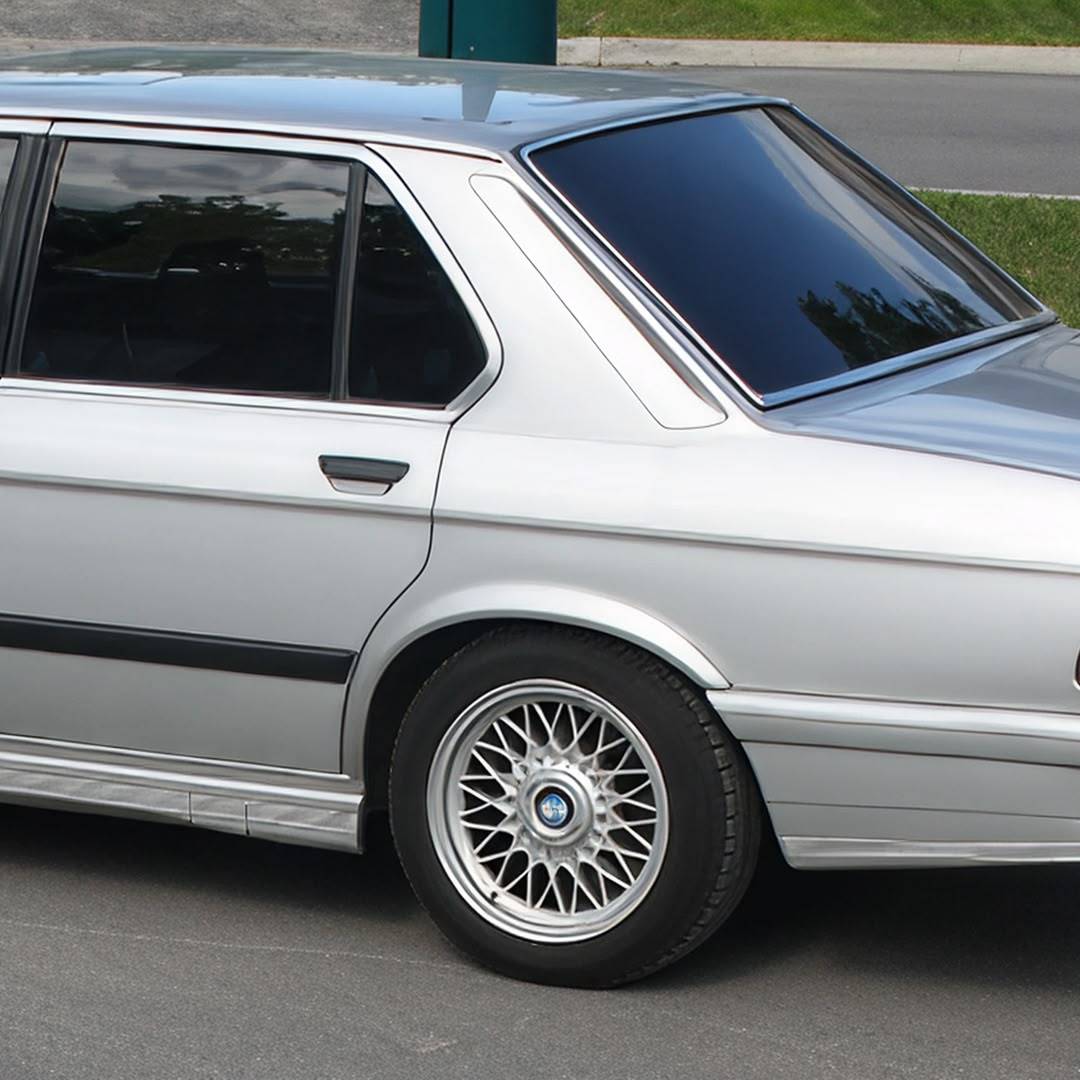
When many people think of the 5 Series, the E34 is one of the most iconic. With it come these staggered wheels, which were also on the 7 and 8 Series too! Another late 1980s to early 1990s classic.
Size: 8x18, 9x18, and 9.5x18 inches
ET (offset): 20, 22, 24, 13, 25
Used on models: E34, E39, E38, E31
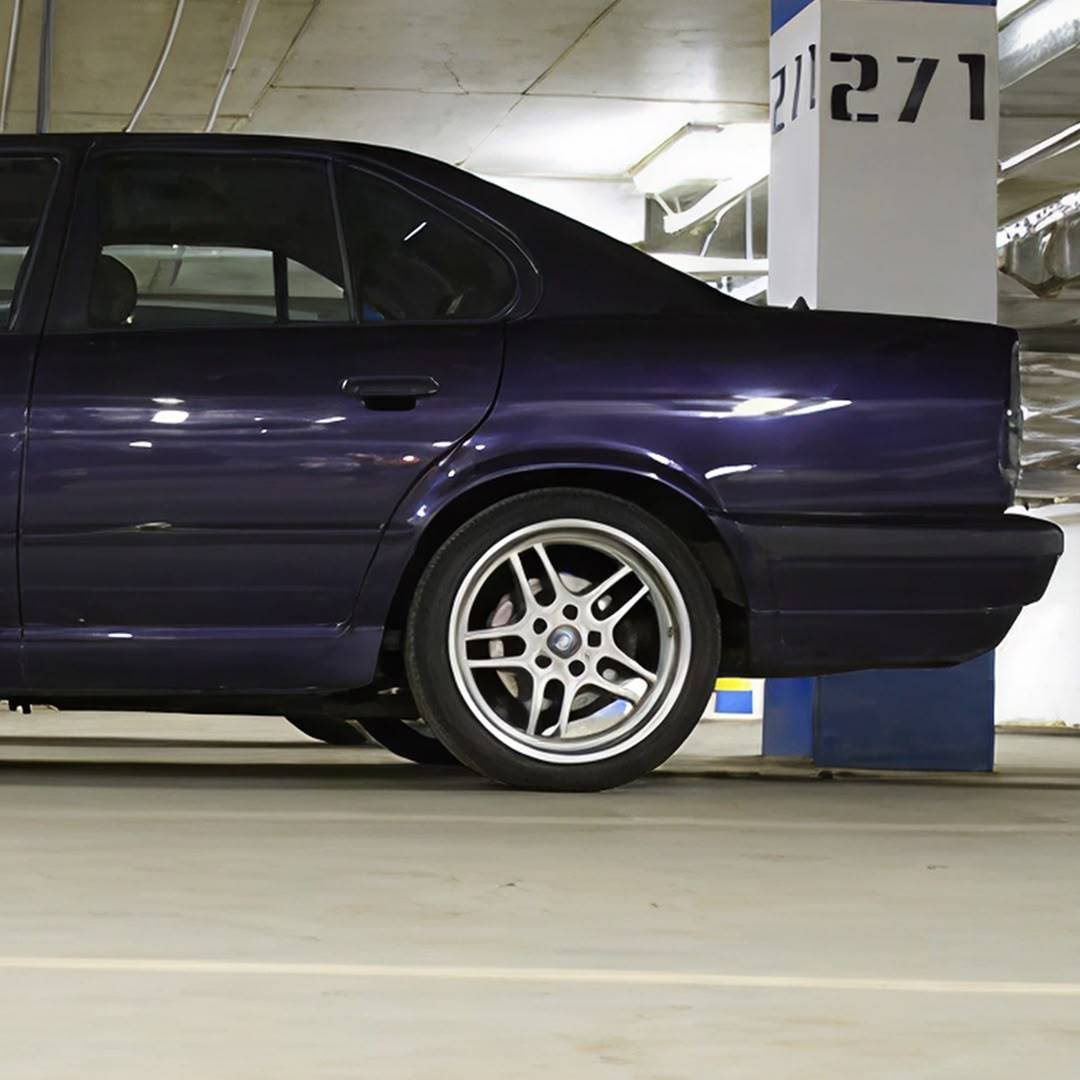
Big, lots of spokes, and used on lots of models, this was probably one of BMW most used wheels during the 80s and 90s. There was even a factory 20 inch version on the 7 Series. While more common today, this was crazy back then. If you plan on putting these on your BMW, make note of the sizes and offsets as they are all over the place with this style!
Size: 6x16, 7x15, 7x16, 7.5x17, 8.5x17, 8x17, 8x18, 8.5x18, 10x20 inches
ET (offset): 42, 47, 46, 41, 50, 34, 20, 26, 24, 22
Used on models: E87, E36, E90, E34, E39, E38, E65
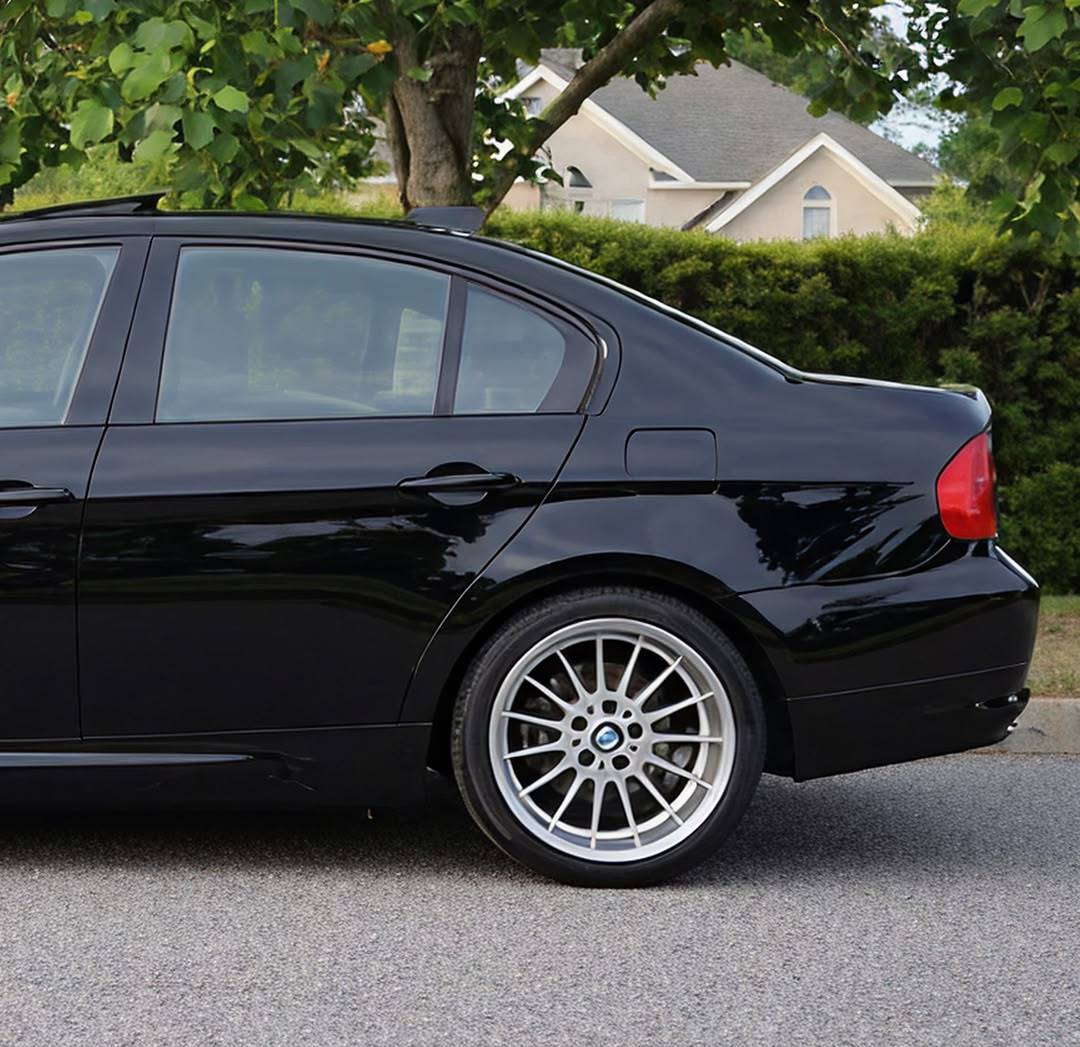
3 Series wheels are almost always going to be crowd favorites, but this one found itself staggered on the 3 and 5 Series, as well as square on the Z4. While obnoxious to clean, they are classic no doubt.
Size: 8x18, 8.5x18 inches
ET (offset): 47, 50, 20, 43
Used on models: E87, E36, E90, E34, E39, E38, E65
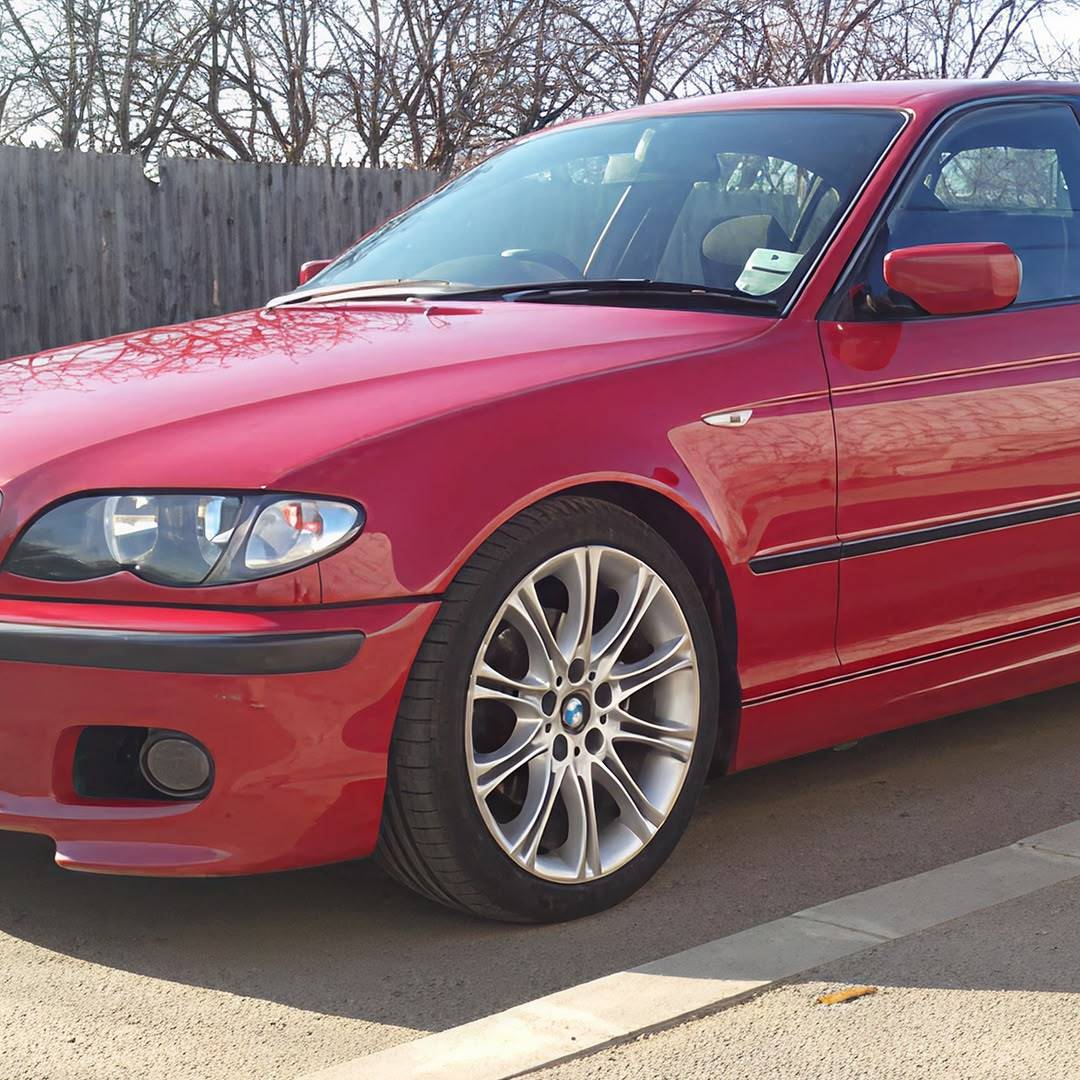
Despite only finding itself on the E90, the exclusivity screamed 5 Series, so there was no mistake about the luxury and performance you were driving with these staggered BMW wheels.
Size: 8x18, 8.5x18 inches
ET (offset): 34, 37
Used on models: E90
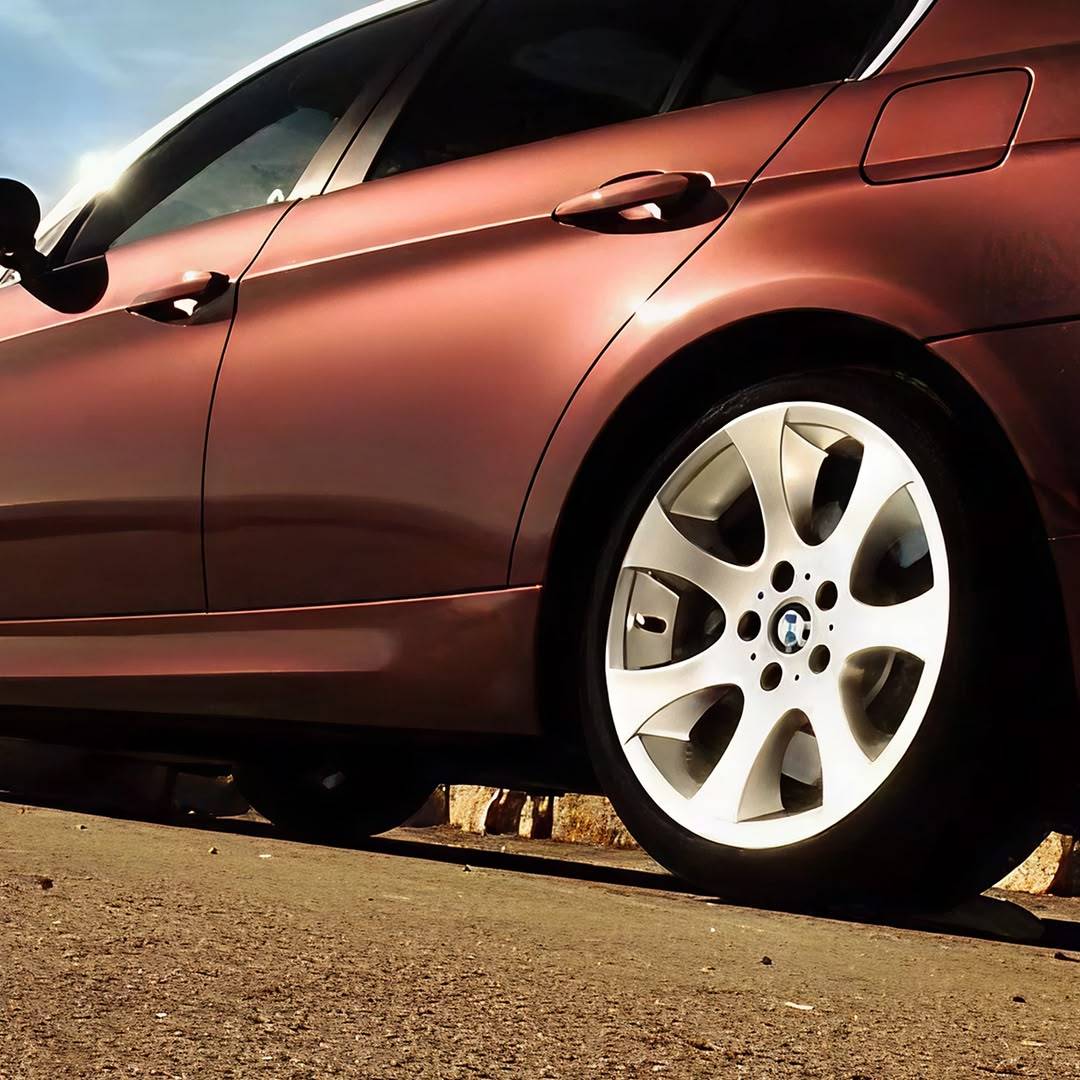
Simple, yet sporty (for the time), the thick and rounded spokes of these wheels gave a stark contrast to the sharp lines of the 3 and 5 Series, and Z3 models these were found on.
Size: 7x15, 7x16, 7.5x17, 8.5x17, 8x17, 9x17 inches
ET (offset): 47, 46, 41, 20, 22, 26
Used on models: E36, E46, E34, E39, E38, Z3 E36
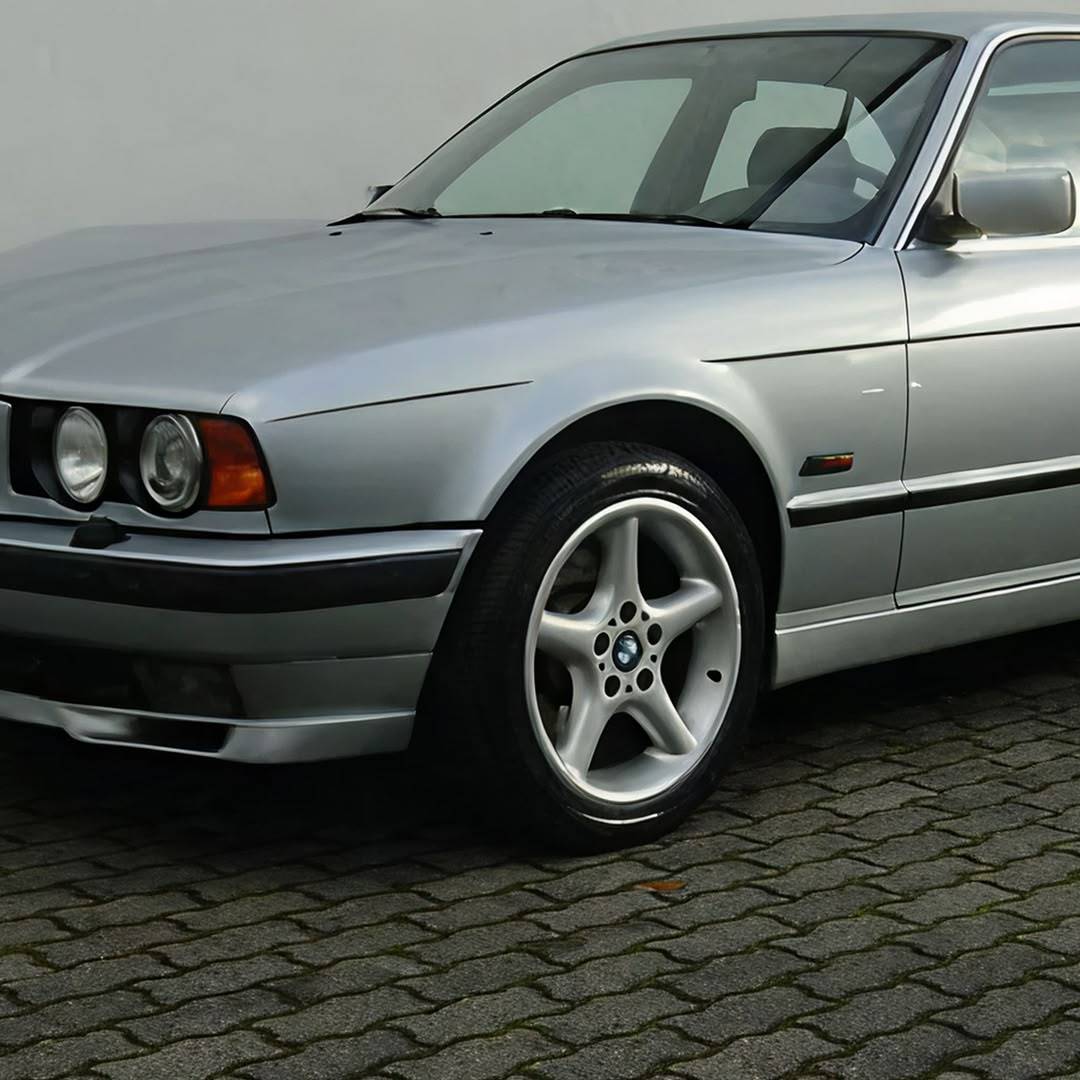
The 90s were all about swoopy and round styles. BMW mixed the boxy feel of the 80s with the curves of the 90s in this 5, 7, and 8 Series staggered wheel style.
Size: 8x17, 9x17 inches
ET (offset): 20, 22, 26, 10, 19
Used on models: E34, E32, E31
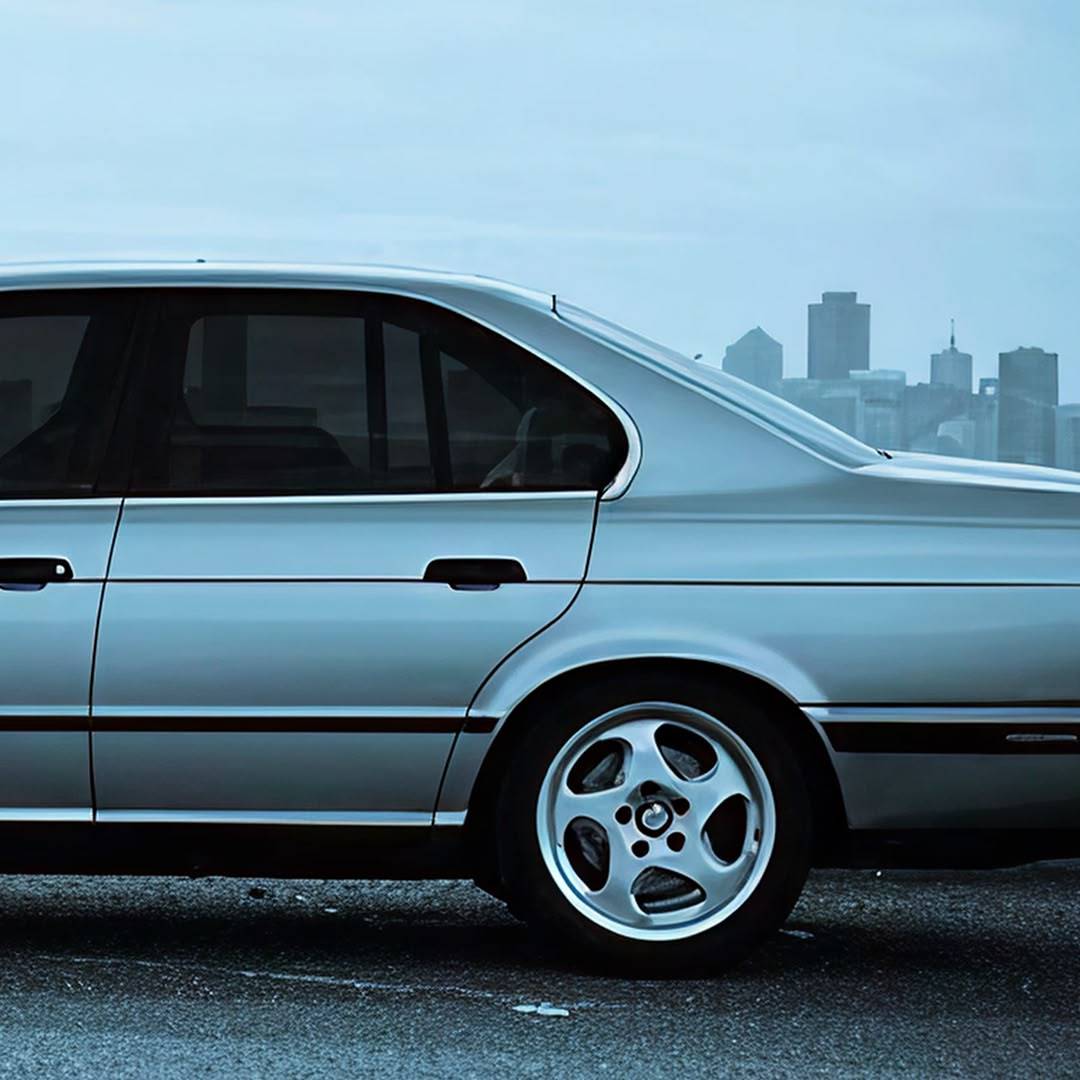
Widely used back in the day, these wheels could be found on plenty of factory and modified BMWs. While there were some after, these were one of the last of the back to back styles of center caps that cover the lugs.
Size: 7x15, 7x16 inches
ET (offset): 20
Used on models: E33, E46, E34, E39, Z3 E36
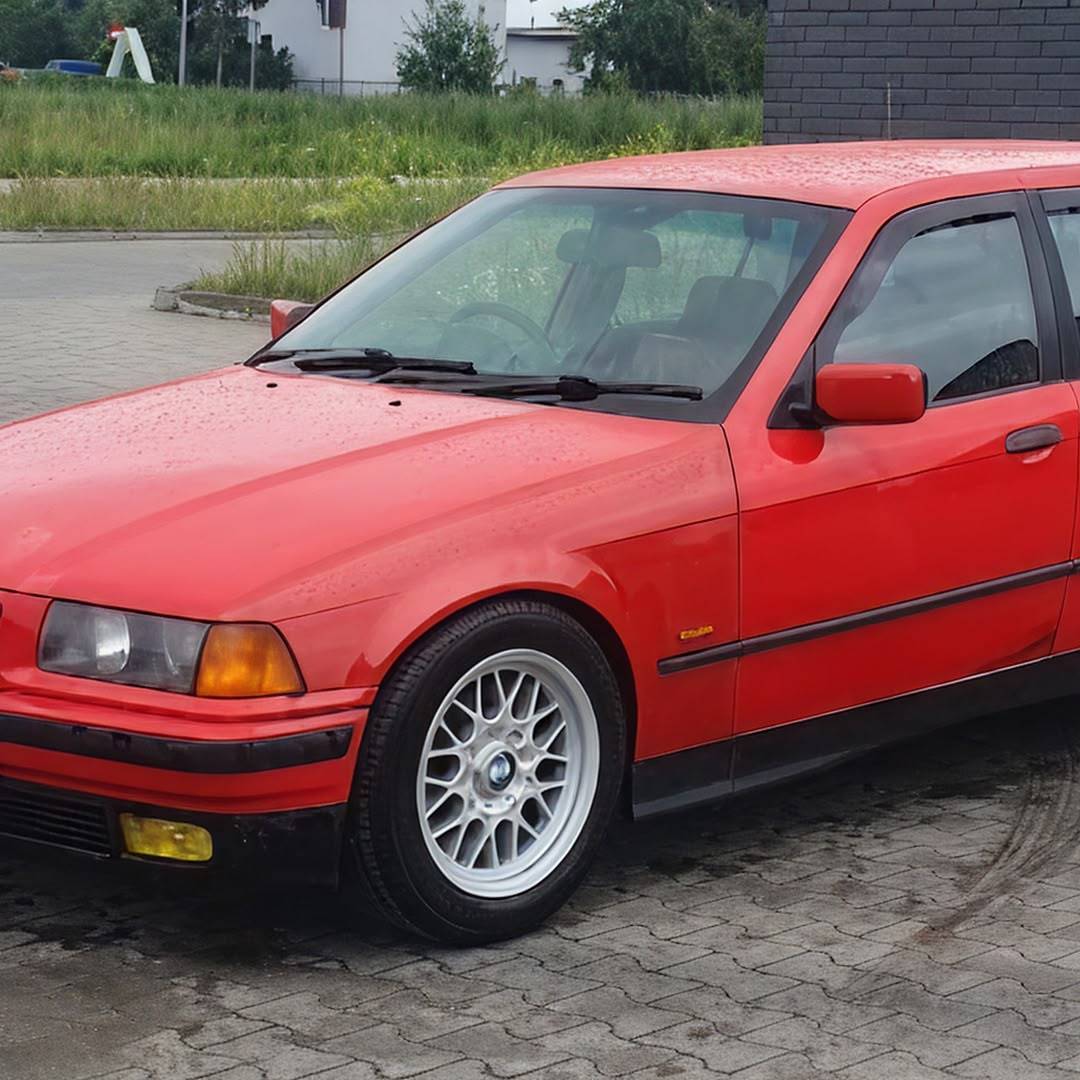
Despite looking like a biohazard symbol, the exposed bolts around the rim give that sporty, modded look, but from the factory. Used on the 3 and 5 Series, as well as the Z3 and Z4 of the time, this was one of the few wheels from BMW that focused more on sporty style over a rich, elegant feel.
Size: 7.5x17, 8.5x17, 8x17, 8x18, 9x18 inches
ET (offset): 41, 47, 50, 20, 24, 18
Used on models: E33, E46, E39, E60, Z3 E36, E85
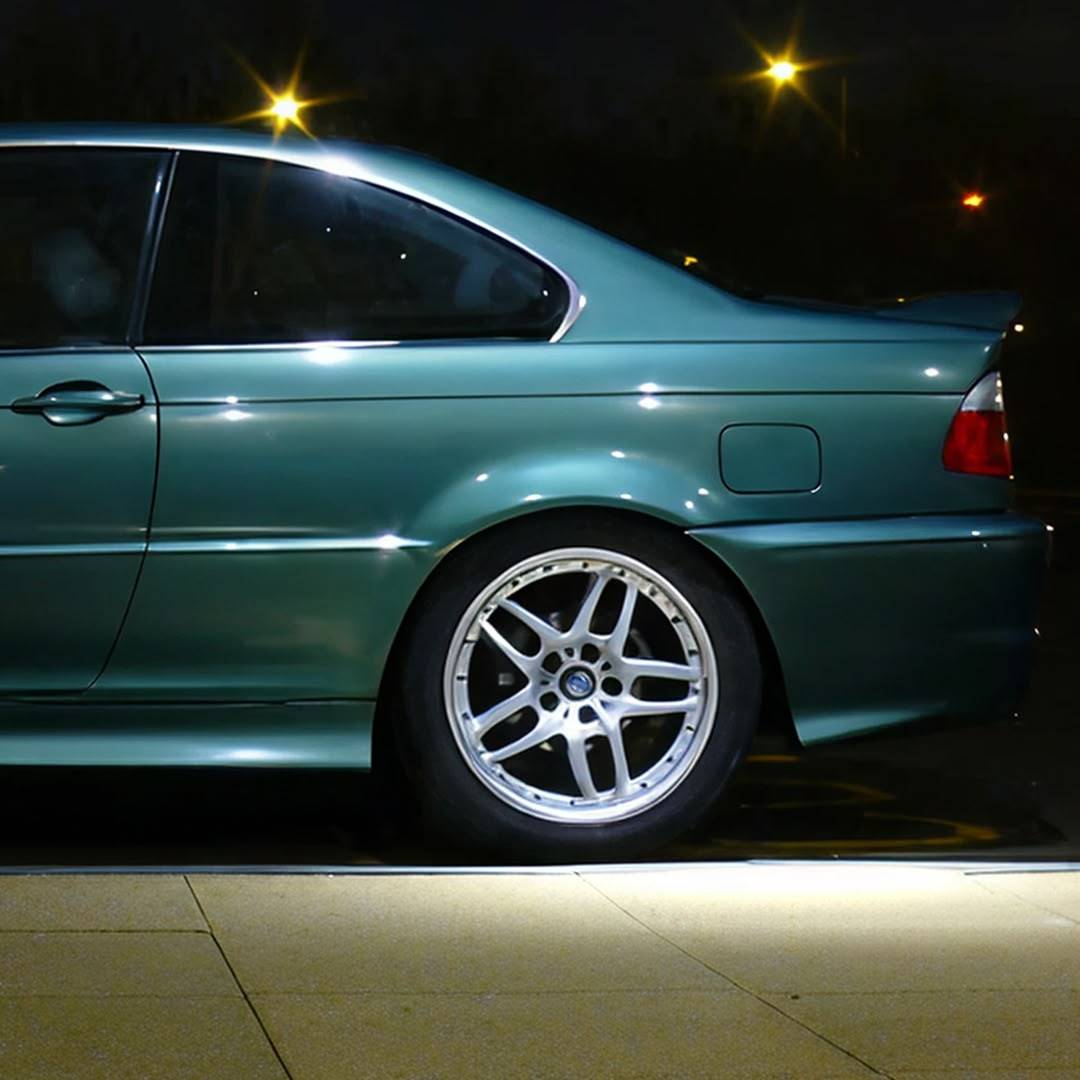
BMW has really cranked it up recently with modern wheels. It seems they all have a touch of sport to them, despite some models focusing on luxury first. For the more modern rides, it seems BMW has really focused on more and more designs, instead of sharing cross platform, so there are tons of factory wheels out there. Again, in no particular order, here are the top ten modern BMW wheels you can find on the Bavarian rides of recent years.
Despite only being found on the F25 X3 and F26 X4, this bold wheel spreads the iconic spokes into a U shape, really giving a sporty and aggressive look, completely changing the appearance of the X3.
Size: 8x18 inches
ET (offset): 43
Used on models: F25 and F26
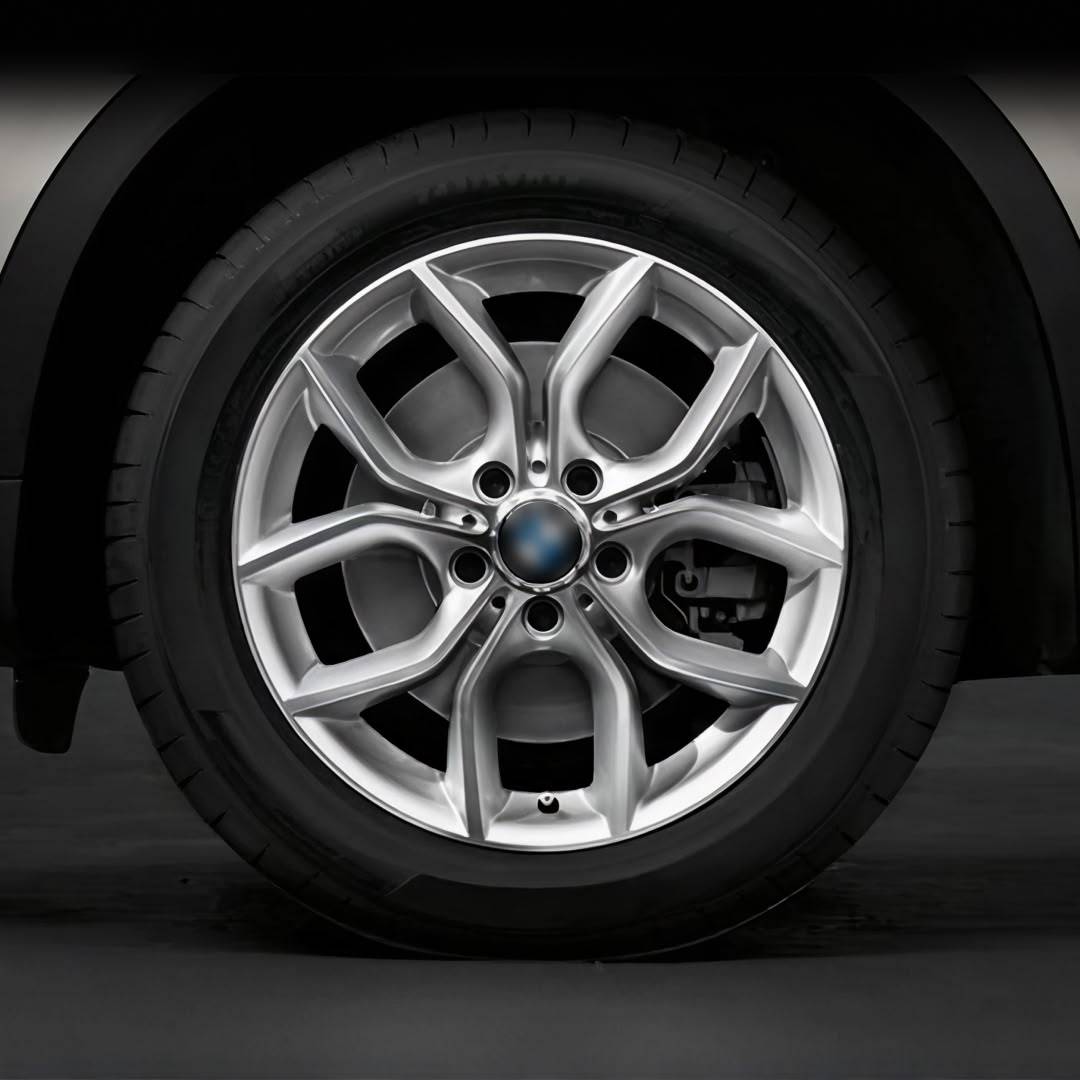
Similar to the 308, but a bit more rounded yet connected, this wheel is found on the E84 X1, but some have put them on other BMWs, and I must say it really dresses them up! From the factory, these are staggered.
Size: 8x18, 9x18 inches
ET (offset): 30, 41
Used on models: E84 X1
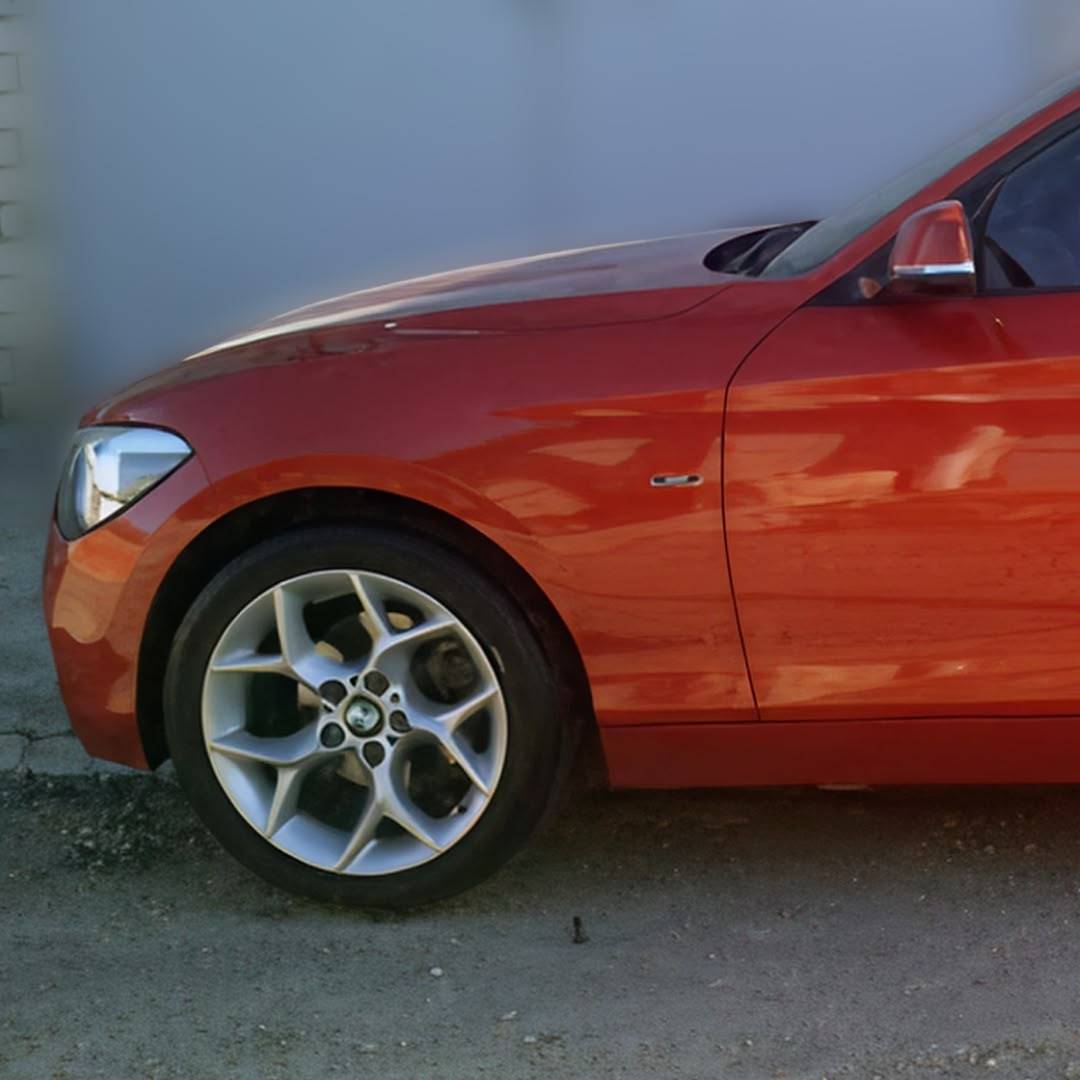
A more aggressive version of the 335 (not listed), and one of BMW’s more aggressive wheels made. The staggered look gives a more commanding authority to the X5 and X6 models they are found on.
Size: 10x20, 11x20 inches
ET (offset): 40, 37
Used on models: E70, E71
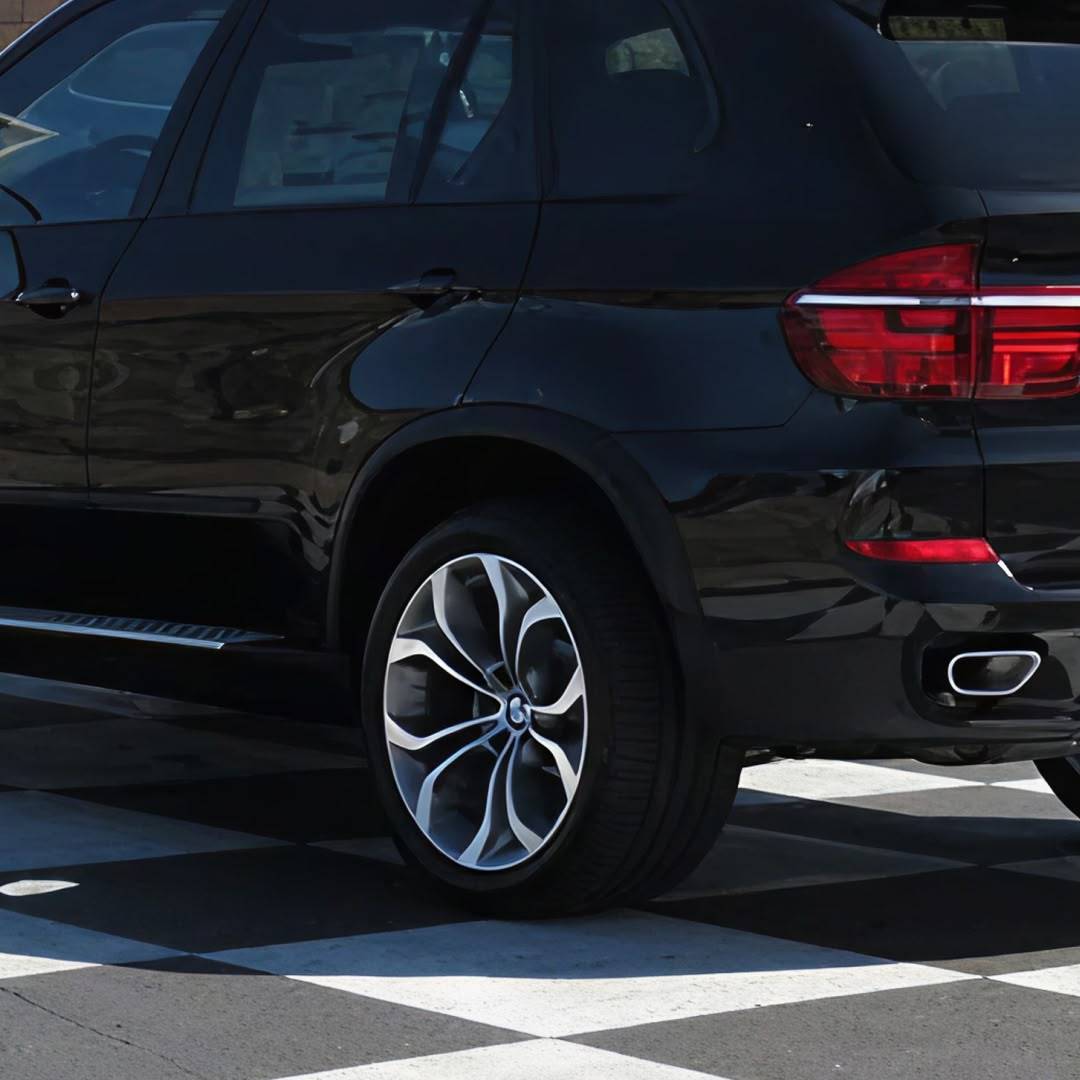
A fantastic mix of sport, aggression, and luxury, these wheels found on some M models a little bit ago really stood out from other ones of the time, probably being one of BMW’s more unique wheels.
Size: 9x19, 10x19 inches
ET (offset): 31, 25
Used on models: E87, E90
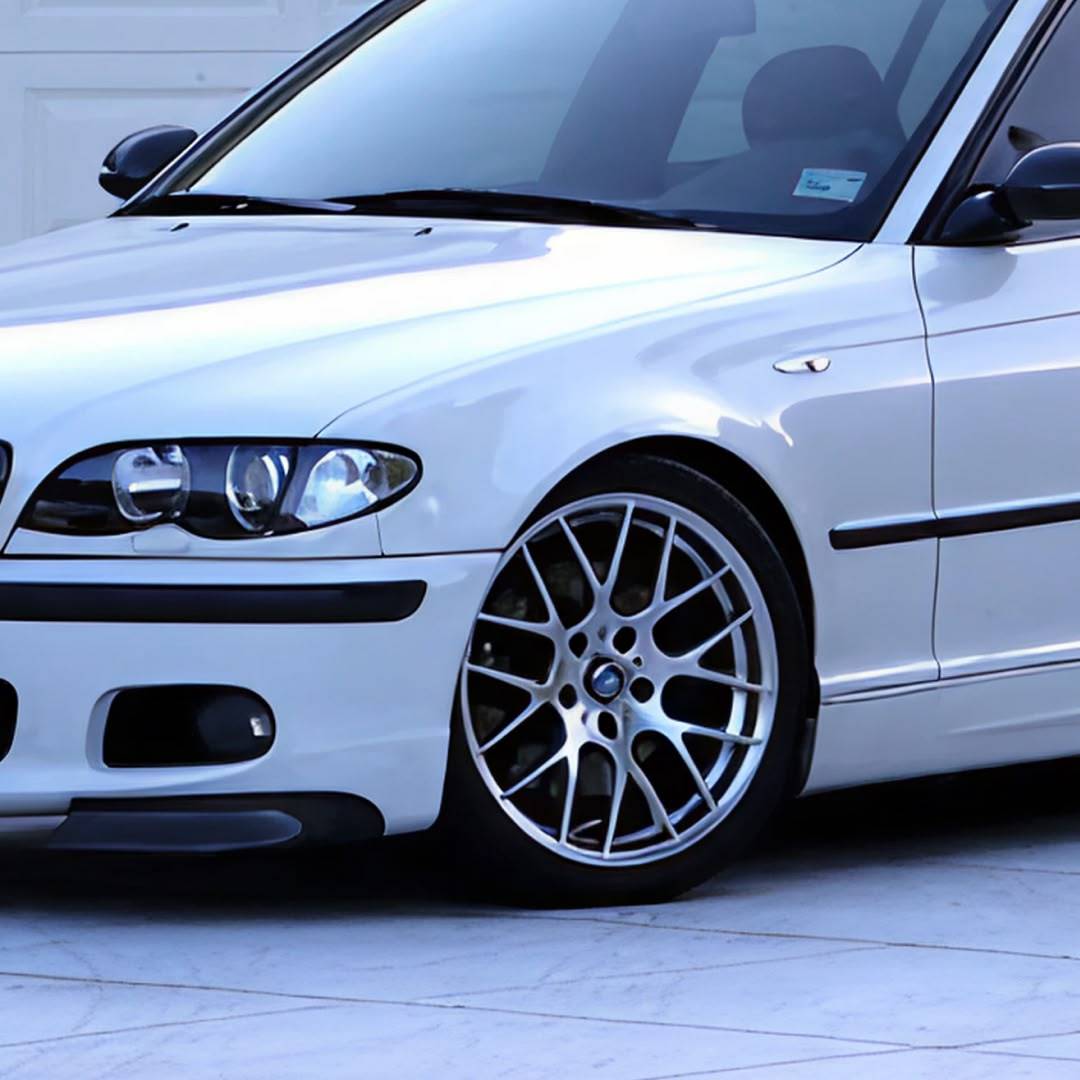
Not added to this list just for the number, but the aggressive styling fits the M models you find it on.
Size: 9x20, 10x20 inches
ET (offset): 29, 40
Used on models: F80
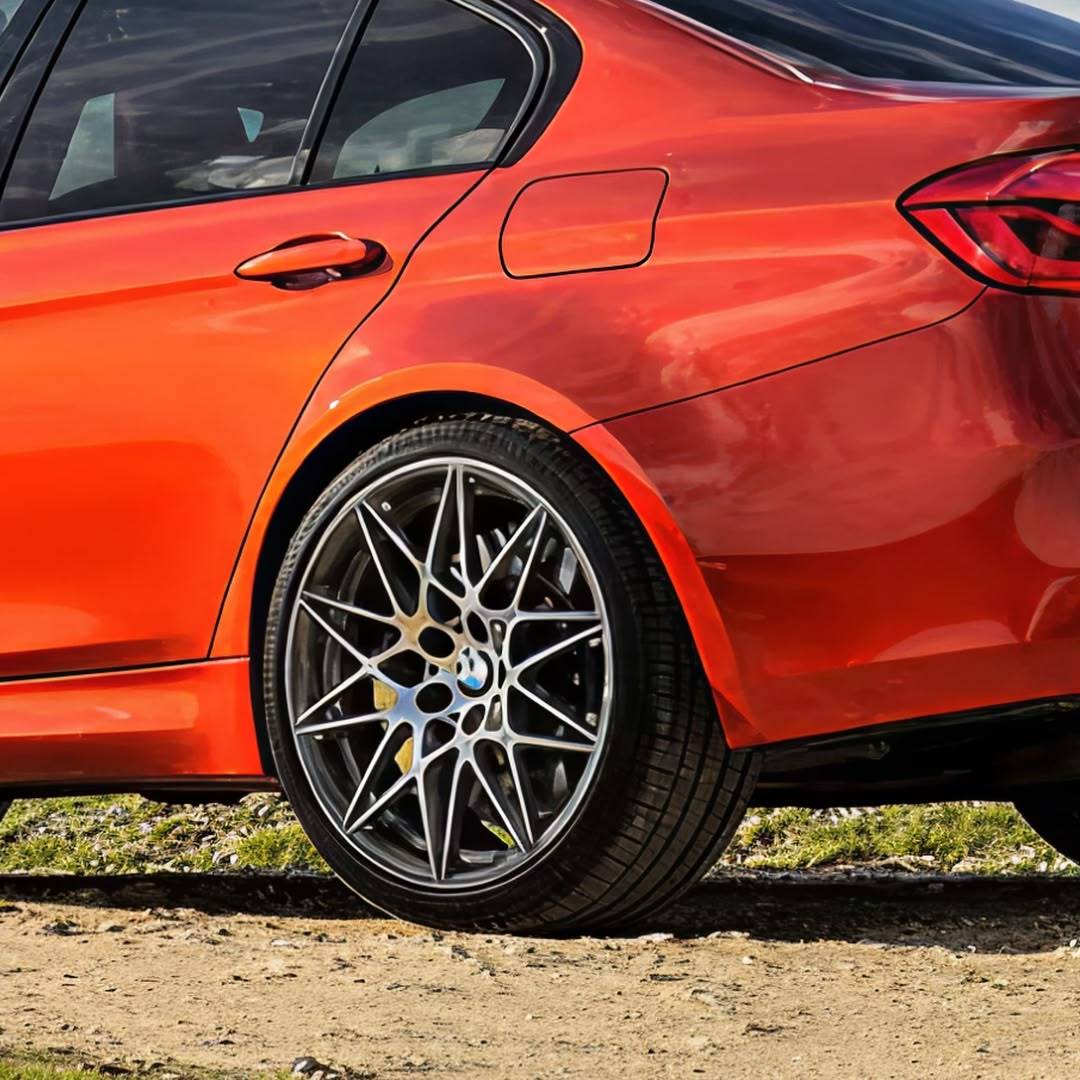
BMW does some factory two-tone wheels every now and then, but this one takes the cake. This wheel is almost two wheels in one: one dark, and one light. Together, they are simply sick.
Size: 8x20, 8.5x20 inches
ET (offset): 36, 47
Used on models: F20, F30
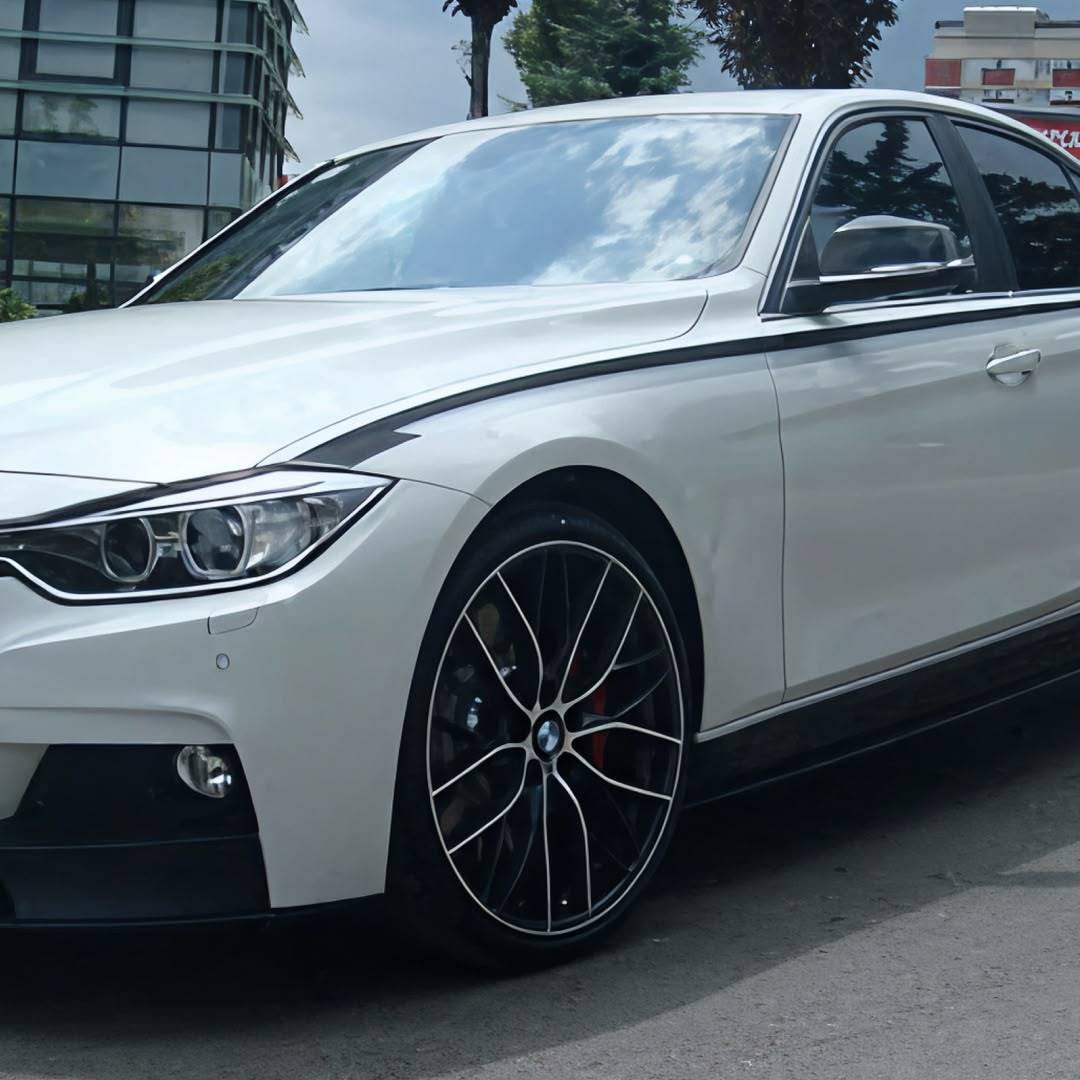
Hear me out… Yes, these are a bit more basic, but this takes the even more basic version at the time, and spices them up with split spokes. While not as aggressive as other wheels, they do look great on a wide range of BMWs newer and old.
Size: 9x19 inches
ET (offset): 32, 25
Used on models: F10
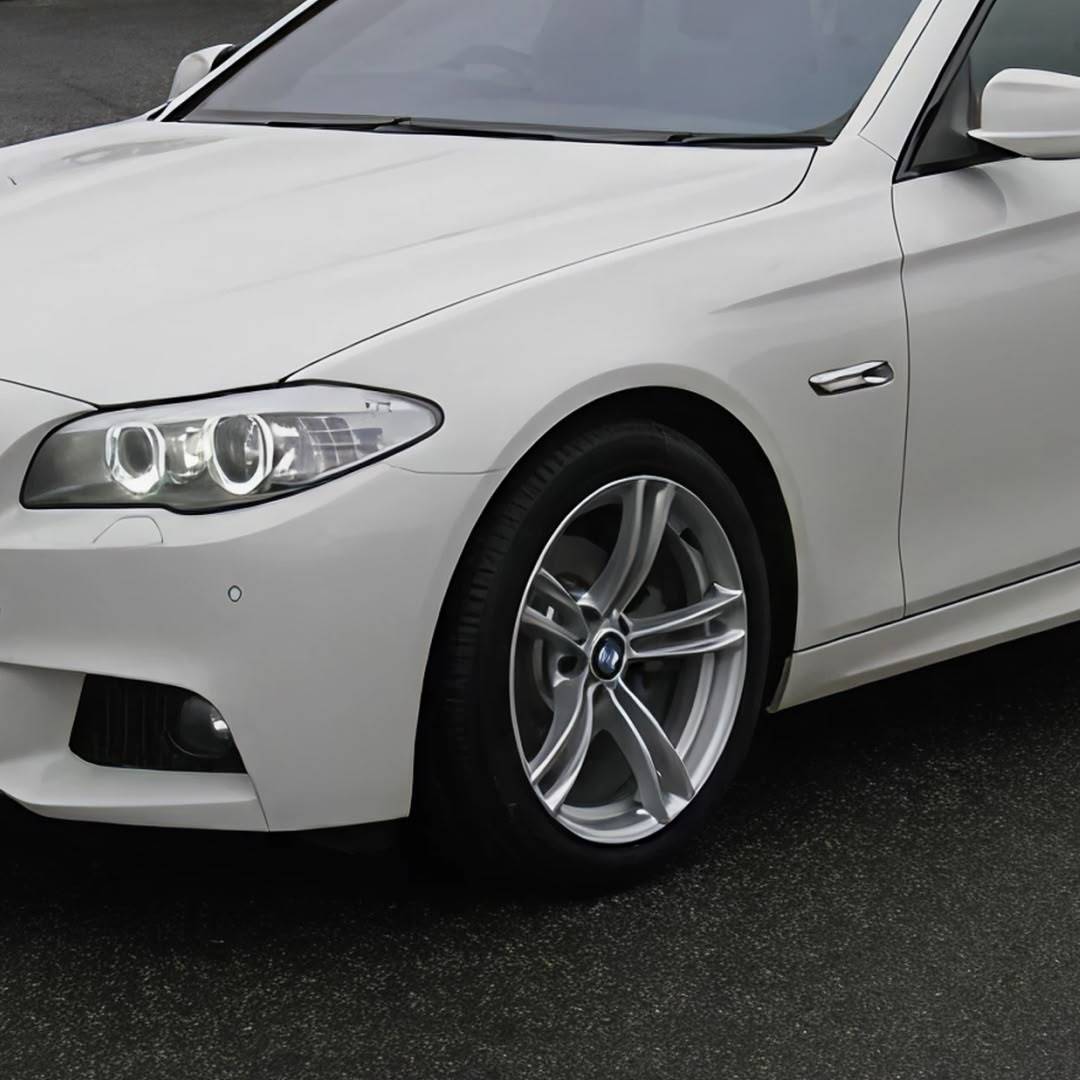
Just enough beyond “basic” to cause a double-take. These wheels take the split spoke design, but change up the spacing, finish color, and other design cues to pop, and really are a good choice to show off your brakes.
Size: 9x20, 10x20 inches
ET (offset): 34
Used on models: F10
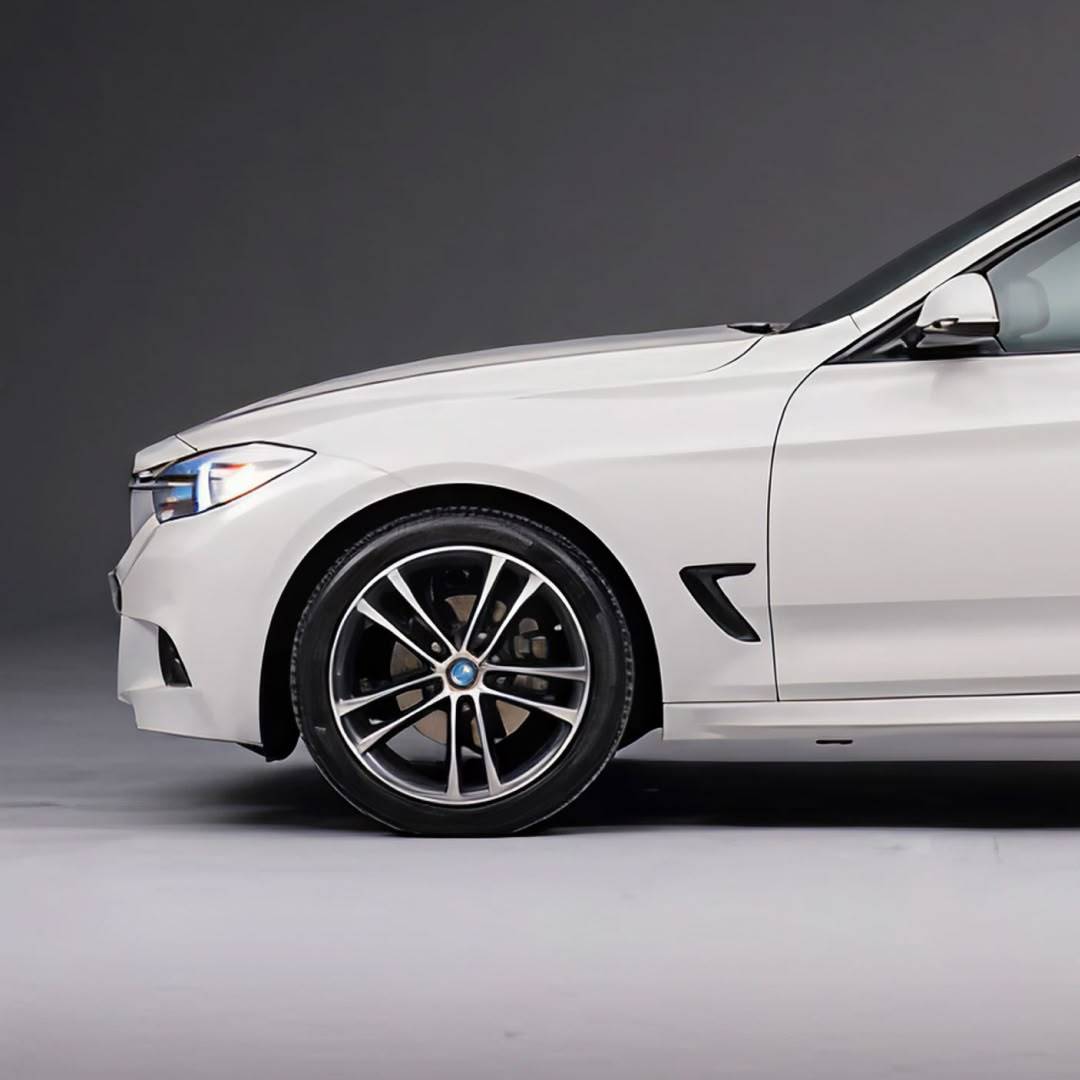
Still rocking that split spoke design, but this one flattens out the spokes, giving a more chiseled appearance. It is a fitting, beefier look with being found on the X5 and X6, especially with the factory staggered fit.
Size: 10x20, 12x20 inches
ET (offset): 40, 35
Used on models: E70, E71
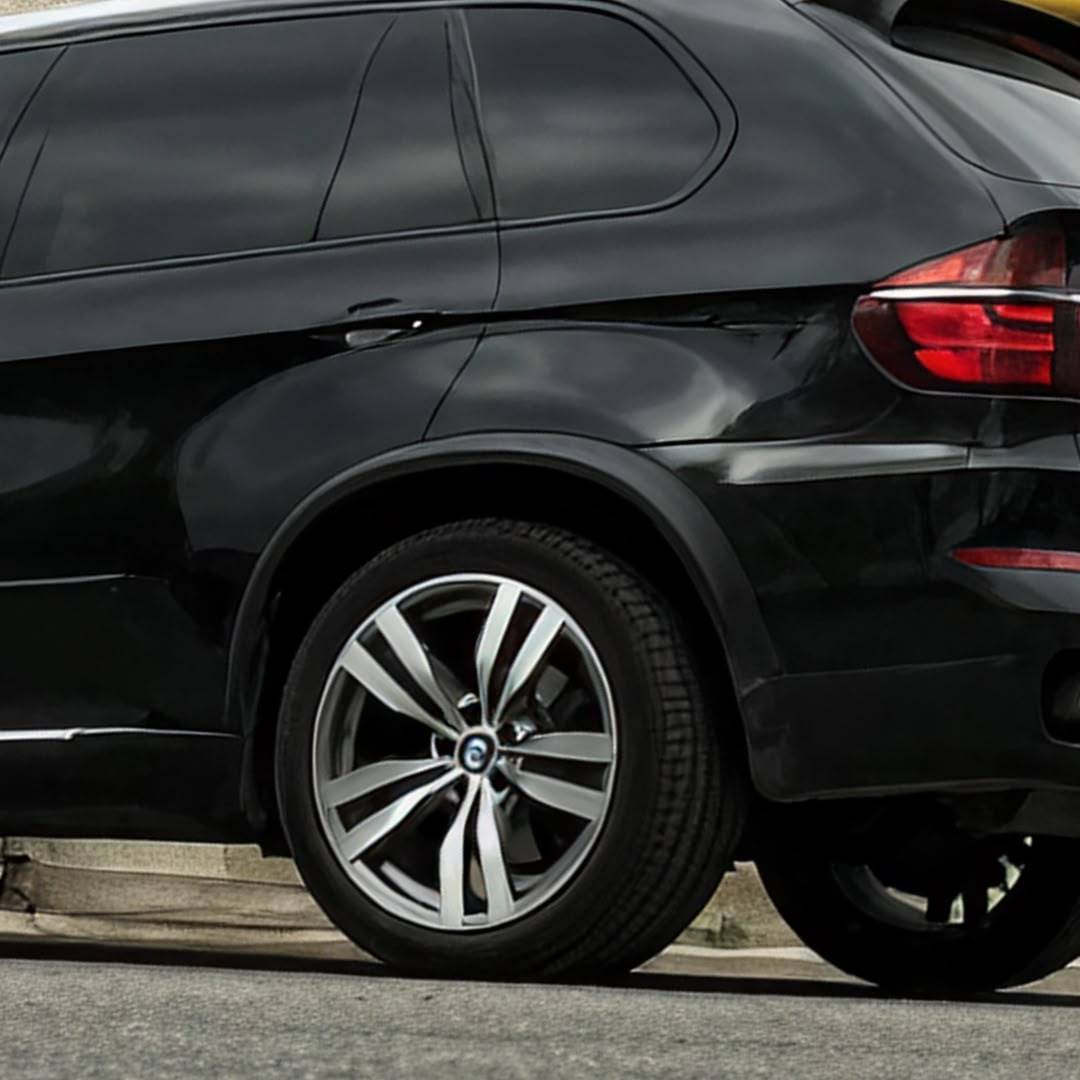
Probably one of the sleekest looking modern wheels, this two-tone design screams performance, sport. Gone are the days of BMW luxury only. The wheels dress up many modern BMWs well!
Size: 8x19, 9x19 inches
ET (offset): 30, 44
Used on models: G30
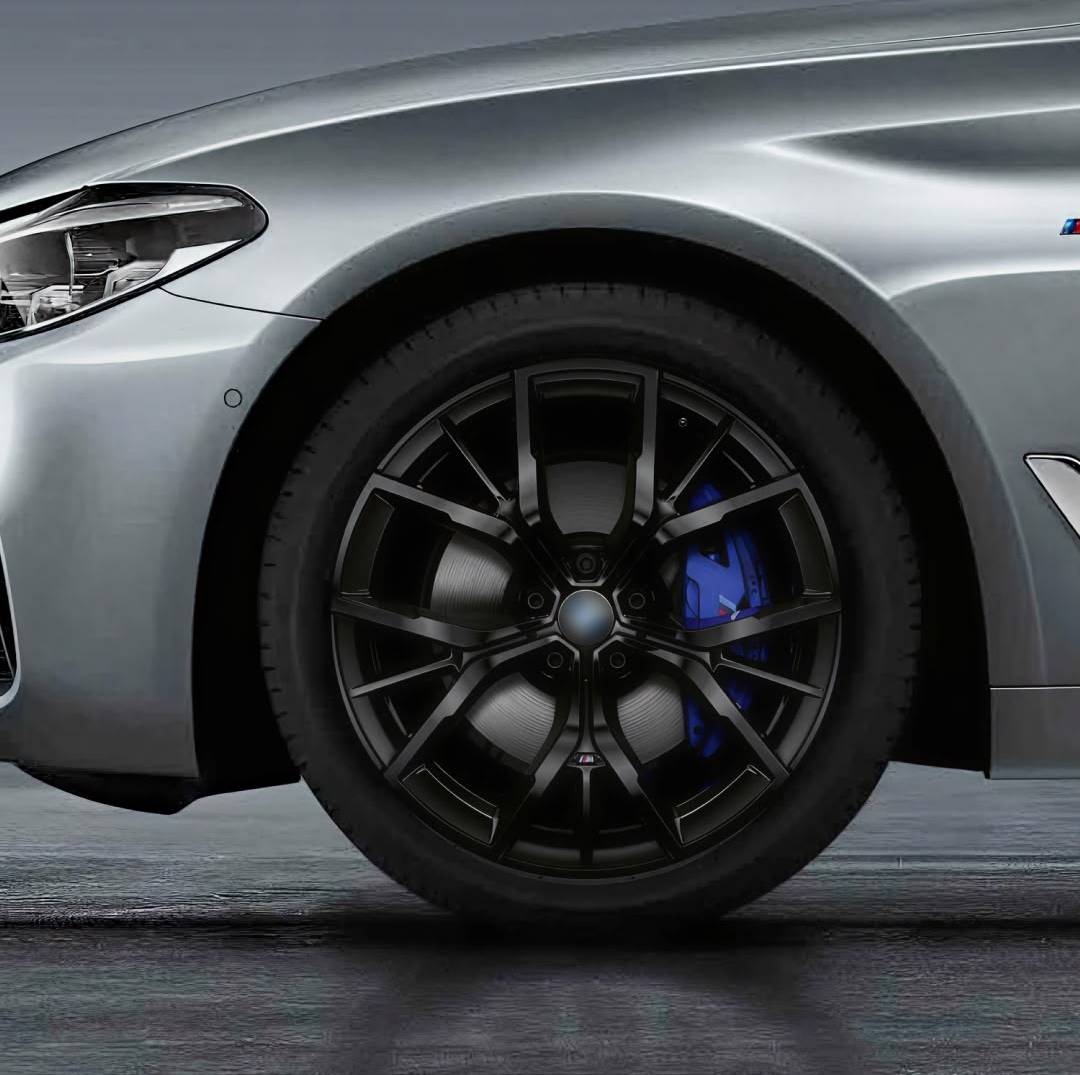
Cleaning your wheels isn’t like cleaning the rest of your car. Wheels are subject to some very harsh conditions… Brake dust. Brake dust is nasty stuff, and it can build up quickly if you’re not on top of cleaning.
If you clean your car regularly, you can probably just get away with some soap and water. However, do not use the same sponge or towels you use for the rest of your car. Even if you just washed your car yesterday, you don’t want to bring those contaminants from your wheels to the rest of your BMW.
If it’s been a while and brake dust has built up, you will want to look into a dedicated wheel cleaner. These are more aggressive cleaners designed for brake dust. Don’t use this on the rest of your car!
Remember to always start with the least aggressive method, and work your way up from there. Wheels are resilient, but you don’t want to eat away at the finish of the wheels as well.
We always have to try and sneak at least one of our products in for the topic of the article, and well… We don’t have anything for wheels, but… We DO have something for your tires. If you want to see how much pressure you have right on your iDrive screen, this simple RDC Safety USB coding will allow you to do just that!
By the way… Is that iDrive screen looking a bit dirty? Take care of that with our BimmerTech Screen Cleaner! Sweet! We managed to get two products in!
Wheels can make or break the look of a vehicle. They can show that you focus on luxury, or that you mean business with performance. Regardless if you want to swap them out for something new or different, I hope this article helped you on your journey! Don’t forget to check out our YouTube channel for other helpful maintenance and DIY focused videos for BMW, MINI, Supra, and Tesla.
The price of OEM BMW rims depends on the size and style of a given wheel. Brand-new, they could cost anywhere from around $500 to as much as a couple of thousand dollars.
BMW rims vary in sizes, but the most common sizes include 17 inch BMW wheels, 18 inch BMW wheels, and 19 inch BMW wheels.
Apart from the finish quality and weight, if you want to verify if the wheels you’re looking at are genuine, try looking for OEM markings at the back, behind the spokes.
The best way to clean BMW rims is to spray them with a special brake dust cleaning solution, wait for it to start dissolving the dirt, rinse off with a pressure washer, and then clean it again with your regular car shampoo, preferably using a very soft brush.
If you want to establish what rims will fit your BMW, make sure to check out your current wheel offset, wheel diameter and width, lug nut pattern, and hub bore. Next, search for plus- or minus-sizing charts on the internet to see what different sizes of wheels will fit your car.
BMW wheel offset is the distance from the mounting surface to the centerline of the wheel. There are a few different “offsets” to keep in mind: positive (the hub center is closer to the outside), zero (the hub center is in line with the wheel center), and negative offset (the hub center is behind the wheel center).
Staggered wheels means you have larger wheels and tires on one of the axles. In the case of some BMW models, the larger wheel-tire combo goes on the rear axle, to counteract the understeer characteristics of a rear-wheel drive car.
Yes, you can put staggered wheels on AWD BMW models, but you need to be careful or you’ll risk damaging your drivetrain. You’ll need to make sure your wheels AND tires are the same diameter both front and back.
Customer Reviews
Comments
Rate the product
This email is already registered.
Please Log In to continue.
Let us find
the right version for you
We'll confirm pricing, compatibility and product details for your car:
Enter your VINThe price of OEM BMW rims depends on the size and style of a given wheel. Brand-new, they could cost anywhere from around $500 to as much as a couple of thousand dollars.
BMW rims vary in sizes, but the most common sizes include 17 inch BMW wheels, 18 inch BMW wheels, and 19 inch BMW wheels.
Apart from the finish quality and weight, if you want to verify if the wheels you’re looking at are genuine, try looking for OEM markings at the back, behind the spokes.
The best way to clean BMW rims is to spray them with a special brake dust cleaning solution, wait for it to start dissolving the dirt, rinse off with a pressure washer, and then clean it again with your regular car shampoo, preferably using a very soft brush.
If you want to establish what rims will fit your BMW, make sure to check out your current wheel offset, wheel diameter and width, lug nut pattern, and hub bore. Next, search for plus- or minus-sizing charts on the internet to see what different sizes of wheels will fit your car.
BMW wheel offset is the distance from the mounting surface to the centerline of the wheel. There are a few different “offsets” to keep in mind: positive (the hub center is closer to the outside), zero (the hub center is in line with the wheel center), and negative offset (the hub center is behind the wheel center).
Staggered wheels means you have larger wheels and tires on one of the axles. In the case of some BMW models, the larger wheel-tire combo goes on the rear axle, to counteract the understeer characteristics of a rear-wheel drive car.
Yes, you can put staggered wheels on AWD BMW models, but you need to be careful or you’ll risk damaging your drivetrain. You’ll need to make sure your wheels AND tires are the same diameter both front and back.
Customer Reviews
Comments
Rate the product
This email is already registered.
Please Log In to continue.
[[comment.name]]
[[comment.text|raw]]
BimmerTech
Newsletter
[[comment.name]]
[[comment.text|raw]]
BimmerTech